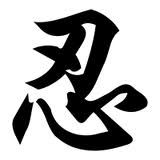 How to become a master. The recipe is a simple one:
3 parts sweat
8 parts tears
A little bit of blood
A whole lot of effort
How to become a master. The recipe is a simple one:
3 parts sweat
8 parts tears
A little bit of blood
A whole lot of effort
Yesterday I was fortunate to see a master at work. Karita Sensei came and someone brought a sword by for him to appraise (kantei). Not knowing anything, we budgeted about 15 minutes for this appointment. Surprisingly, Karita Sensei spent the better part of an hour discussing this sword with its owner. He got down to the smallest detail and explained every one of his findings and with saint-like patience. It was mind blowing how much detail he could suss out. He explained where the sword was likely made and by whom and then he went further and described all the shortcomings of the blade. He then went on to discuss the fittings and their likely origins. But the mind blowing thing is when he discussed the paperwork that came with the sword and the likelihood that it was not legitimate. He was able to discern so much information that a beginner would likely have missed because it was so minute but to him it stood out like a sore thumb. I don't think his appraisal was what the owner was looking for but it was free and very detail oriented so how could he be mad.
Watching Karita Sensei work was truly a treat. We forget how much preparation goes into becoming an expert at something. Afterwards as we discussed it, Karita Sensei told me, "I treat it and study it like fine art." He is passionate about what he does and it is apparent in his skill. This reminds me of a quote. The famous violinist Sarasate was once called a genius by a famous critic to which he responded, “For 37 years I've practiced 14 hours a day, and now they call me a genius.” Karita Sensei's mastery like that of Sarasate is a result of a lifetime of study that was built upon a lot of effort.
--------------------------------------------- Day 7 update: I think I have found the meaning to this exercise. It began with letting others off the hook but now it seems the more important or meaningful person to let off the hook is myself. Don't get me wrong the easy ones are still there like when my assistant got lost, but the more meaningful one came at dinner when I got upset about something but then remembered to let myself off the hook. This helped me shift back to balance and enjoy the rest of the evening.
Day 8: Let 4 other people off the hook and yourself 4 times.








